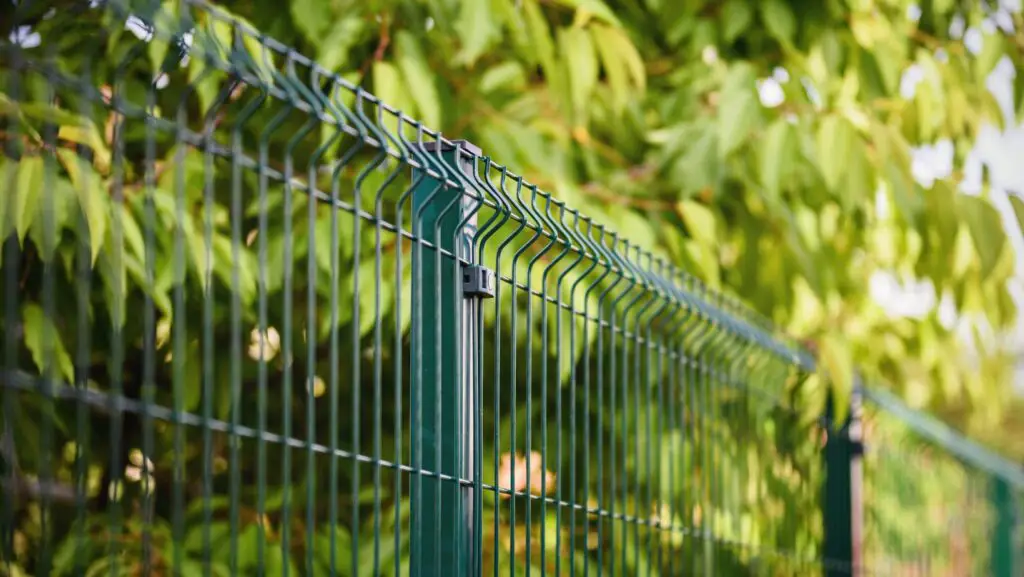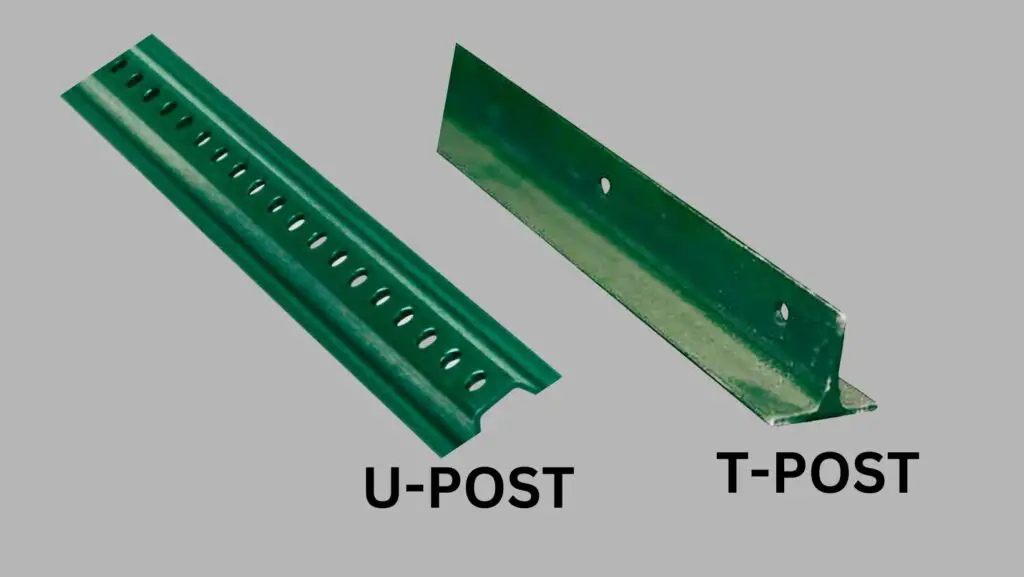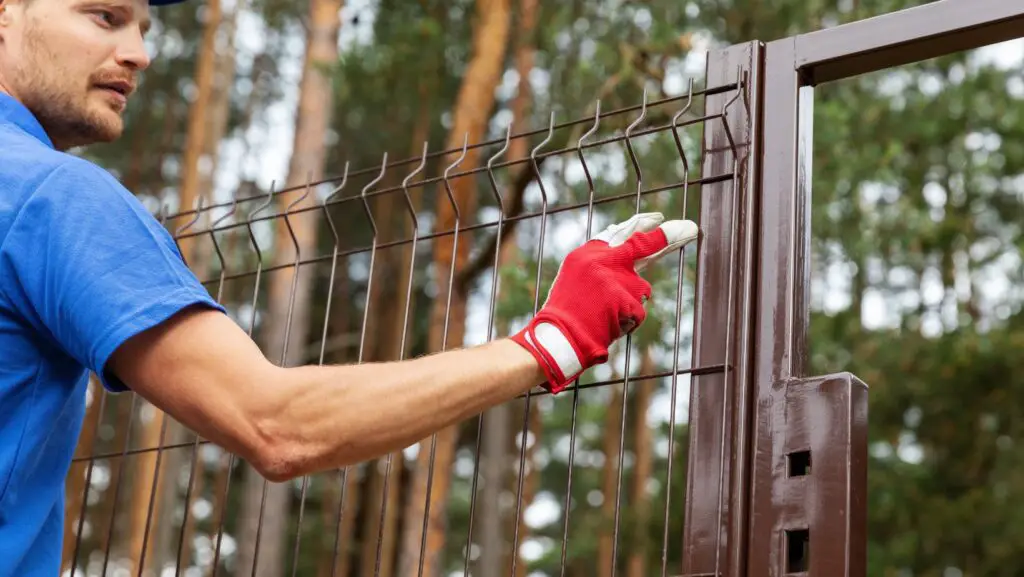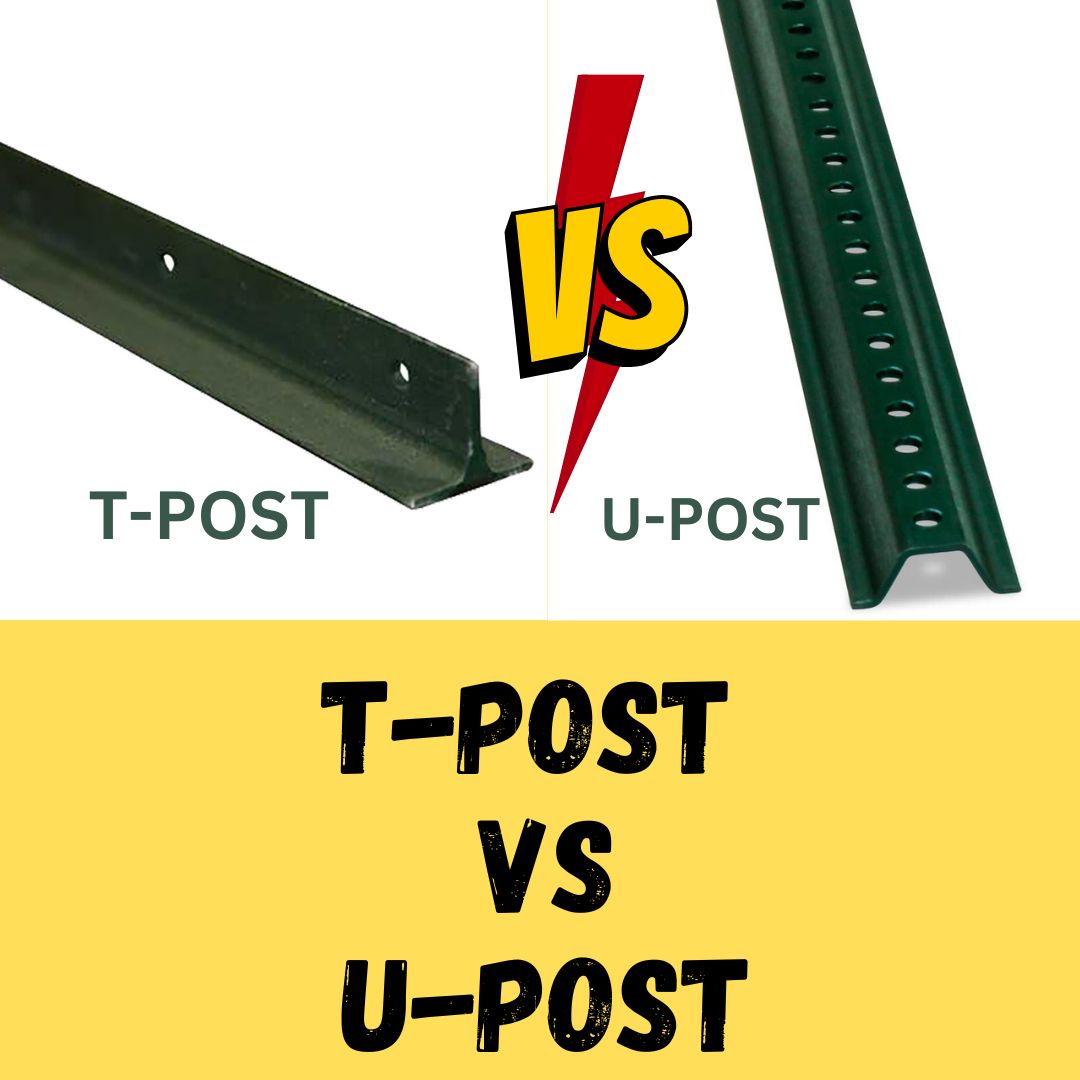Why is it called T post or U post? T-posts and U-posts are named after their shape. T-posts are named for their “T” shape, which looks like a horizontal line with a vertical line running down the middle. The horizontal top of the T-post extends on either side of the post, giving it a distinct T shape. U-posts are named for their “U” shape, which looks like a rounded top with two vertical lines running down either side. When viewed from above, the U-post looks like the letter U. These names are widely used in the fencing industry to distinguish between these two common types of fencing posts.
What is U-Post?
A U-post is a type of fencing post that is shaped like a “U”. It is also known as a “studded T-post” or a “U-channel post”. U-posts are commonly made of steel or other durable materials and are designed to be driven into the ground to provide support and stability for a variety of fencing applications. The rounded top of the U-post is narrower than the width of the post, which can make it easier to attach fence materials such as wire or mesh. U-posts are often used for lighter-duty fencing applications, such as garden fencing, temporary fencing, or snow fencing. They are generally less expensive than other types of fencing posts, and they are relatively easy to install.
What is T-Post?
A T-post is a type of fencing post that is shaped like a “T”. It is also known as a “T-stake” or a “metal fence post”. T-posts are commonly made of steel or other durable materials and are designed to be driven into the ground to provide support and stability for a variety of fencing applications. The flat, wide top of the T-post extends horizontally on either side of the post, providing a strong anchor point for fence materials such as wire or mesh. T-posts are often used for heavier-duty fencing applications, such as livestock fencing or boundary fencing. They are generally more expensive than U-posts, but they are also stronger and more durable. T-posts are relatively easy to install, but they may require more effort than U-posts due to their weight and size.

Difference Between T-Post And U-Post
T-posts and U-posts are both commonly used fencing posts, but they have some key differences in design and function. Here are the main differences and comparisons between the two:
Shape: The most obvious difference between T-posts and U-posts is their shape. T-posts are shaped like a “T” and have a flat, wide top that extends horizontally on either side of the post. U-posts, on the other hand, are shaped like a “U” and have a more rounded top that is narrower than the width of the post.
Strength: T-posts are generally considered to be stronger than U-posts because of their shape. The horizontal top of the T-post provides more support and stability for the fence, especially when it is being pulled or strained in one direction. U-posts can still be quite strong, but they are generally better suited for lighter-duty fencing applications.
Cost: T-posts and U-posts are both relatively inexpensive compared to other types of fencing posts, but T-posts tend to be slightly more expensive due to their greater strength and durability.
Installation: T-posts and U-posts are both relatively easy to install, but T-posts may require a bit more effort because they are heavier and more difficult to maneuver. U-posts are generally lighter and easier to work with, but they may require more support (such as additional stakes or bracing) to ensure they are securely anchored in place.

T-post and U-post Installation
Here are some general instructions for installing T-posts and U-posts:
T-Post Installation:
- Choose the appropriate size and spacing for your T-posts based on the type of fence you are installing and the terrain of your property.
- Use a post driver or sledgehammer to drive the T-posts into the ground, making sure that they are level and plumb.
- Use a fence stretcher to tension the fence wire or mesh and attach it to the T-posts using clips or ties.
- Install any additional fence hardware or accessories (such as gates or tensioning systems) as needed.
U-Post Installation:
- Choose the appropriate size and spacing for your U-posts based on the type of fence you are installing and the terrain of your property.
- Mark the location of the U-posts along the fence line using stakes or markers.
- Use a post hole digger or auger to dig holes for the U-posts, making sure that they are deep enough and wide enough to provide stable anchoring.
- Place the U-posts in the holes and fill them with concrete or gravel to provide additional stability.
- Allow the concrete or gravel to dry and set before attaching the fence material to the U-posts using clips or ties.
- Install any additional fence hardware or accessories (such as gates or tensioning systems) as needed.
These are just general guidelines for installing T-posts and U-posts. The specific installation process may vary depending on the type of fence you are installing, the soil conditions of your property, and other factors. It’s always a good idea to consult with a professional fencing contractor or refer to the manufacturer’s installation instructions for more detailed guidance.

T-Post Vs U-Post Pros and Cons
Here are some pros and cons of T-posts and U-posts to help you compare them:
T-Post Pros:
- Stronger and more durable than U-posts
- Better suited for heavier-duty fencing applications
- Flat top provides a stronger anchor point for fence materials
- More resistant to bending or breaking under stress
T-Post Cons:
- More expensive than U-posts
- Heavier and more difficult to maneuver
- May require more effort to install
- Can be more difficult to remove or reposition once driven into the ground
U-Post Pros:
- Less expensive than T-posts
- Lighter and easier to maneuver
- Better suited for lighter-duty fencing applications
- Rounded top can be easier to attach fence materials to
U-Post Cons:
- Less strong and durable than T-posts
- May require additional support (such as stakes or bracing) to ensure stability
- Less resistant to bending or breaking under stress
- Rounded top may not provide as strong of an anchor point for fence materials
T Post and U Post Prices
The prices of T-posts and U-posts can vary depending on a variety of factors, such as the material they are made of, their size and weight, and the manufacturer or retailer selling them. Here are some general price ranges to give you an idea of what to expect:
T-Post Prices:
- 6 ft. T-posts typically range from $5 to $10 each
- 8 ft. T-posts typically range from $7 to $15 each
- Prices may be higher for heavier-duty T-posts or those made of higher-quality materials
U-Post Prices:
- 4 ft. U-posts typically range from $2 to $5 each
- 6 ft. U-posts typically range from $4 to $10 each
- Prices may be higher for longer or heavier-duty U-posts or those made of higher-quality materials
It’s important to note that these prices are general estimates and can vary depending on many factors, including your location, the retailer you purchase from, and the number of posts you need. It’s always a good idea to shop around and compare prices from multiple retailers to find the best deal.
T Post Vs U Post Durability and Strength
Here are some key points comparing the durability of T-posts and U-posts:
T-Post Durability:
- T-posts are generally considered to be more durable than U-posts due to their shape and design.
- The horizontal top of the T-post provides more support and stability for the fence, especially when it is being pulled or strained in one direction.
- T-posts are less likely to bend or break under stress compared to U-posts.
- T-posts are better suited for heavier-duty fencing applications, such as livestock fencing or boundary fencing, where they may be subject to greater wear and tear over time.
U-Post Durability:
- U-posts are generally less durable than T-posts due to their rounded top and narrower width.
- U-posts may be more prone to bending or breaking under stress compared to T-posts.
- U-posts are better suited for lighter-duty fencing applications, such as garden fencing or temporary fencing, where they may be subject to less wear and tear over time.
- U-posts may require additional support (such as stakes or bracing) to ensure they are securely anchored in place in areas with heavy wind or other environmental factors that could strain the fence.
5 Best U-Post and T-Posts
Here are 5 top-rated U-posts and 5 top-rated T-posts based on their durability, strength, and overall quality:
Top 5 U-posts:
- The Hillman Group 4 ft. Green Studded U-Post
- SteelWorks 6 ft. Green Powder-Coated U-Post
- Tarter Farm and Ranch Equipment 4 ft. Light Duty U-Post
- Blue Hawk 5 ft. Green Powder-Coated U-Post
- Fi-Shock 4 ft. White Poly Step-In U-Post
Top 5 T-posts:
- CMC Southern Post 6 ft. Green Studded T-Post
- Oklahoma Steel & Wire 8 ft. Green Studded T-Post
- Keystone Steel & Wire 6 ft. Green Studded T-Post
- Behlen Country 8 ft. Green Studded T-Post
- Tarter Farm and Ranch Equipment 6 ft. Heavy Duty T-Post
Summary
In summary, T-posts and U-posts are both commonly used types of fencing posts with distinct shapes and designs. T-posts are shaped like a “T” with a flat, wide top that provides more support and stability for heavier-duty fencing applications. U-posts are shaped like a “U” with a rounded top that is better suited for lighter-duty fencing applications.
T-posts are generally stronger and more durable than U-posts, but they are also more expensive and heavier to work with. U-posts are less expensive and easier to work with, but they may require additional support and are less resistant to bending or breaking under stress. The choice between T-posts and U-posts will depend on the specific needs of your fencing project, including the type of fence being installed and the environmental factors that may affect its strength and durability.
